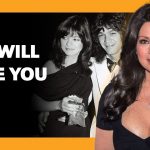After breaking out in the 1960s thanks to performances in hits such as Darling and Doctor Zhivago, British actress Julie Christie seemed poised to become one of the biggest stars in the world. However, the actress decided to pursue her own path instead of becoming a megastar. Working only sporadically in the decades since. One thing that is often credited with inspiring the actress to eschew Hollywood superstardom is her longtime friendship with fellow actor Warren Beatty. Join Facts Verse as we finally understand why Julie Christie left Hollywood.
Julie Christie was born on April 14, 1940, in India. Her father was a tea planter, and she grew up on his plantation for a period before eventually being sent off to England to receive a formal education. During her early education, Julie became proficient in both French and Italian. And she ended up traveling to Paris as a teenager to finish her studies. While in France, Julie had some experience with the artists of the area. Julie’s mother was a painter, and the future actress felt that she might like to become one herself.
While she toyed around with the idea of becoming a painter, she ended up becoming an actress instead. She returned to England and enrolled in the Royal Central School of Speech and Drama in London. And making her professional debut on the stage as a member of the Frinton Repertory of Essex. This debut came in 1957, after which point it was only a few years before Julie came to Hollywood.
Though Julie had broken out on the stage, she eventually decided that she preferred film. Working on the stage had allowed her to travel; and she found herself in Hollywood by the 1960s. In 1961, she made her very first appearance on the screen. This appearance was on the television series A for Andromeda. And her first role in a film came the following year.
Julie’s first role in a film came via the 1962 comedy Crooks Anonymous. And she appeared in another comedy by the name of The Fast Lady the very same year. A more notable role came in the 1963 film Billy Liar, though her true breakout appearance wouldn’t come until she got the role in the 1965 feature Darling. A part of the Swinging Sixties movement.
After her breakout role in the 1965 Swinging Sixties feature Darling; Julie’s star status cemented when she appeared in the blockbuster film Doctor Zhivago later that year. Between the two roles, one could see the dueling sides of Julie’s personality that would eventually cause her to leave Hollywood for good. Her role in Doctor Zhivago represented her star potential. While her role in Darling represented her intrinsic ties to the counter culture.
Following Julie’s two hit performances in 1965; the actress has chosen to perform more in roles that she thinks will be artistically rewarding than roles that she thinks will be financially successful. She has also chosen to work relatively sporadically in the decades since. Which has often prevented her from being as big of a name as some of her contemporaries. Still, she performed in a few more notable roles over the course of the 1960s. And has popped up multiple times in the entertainment industry since then.
The first instance of Julie seemingly choosing artistic integrity over commercial potential came when she decided to take part in 1966’s Fahrenheit 451. Julie had immense respect for the film’s French director, as well as it’s rebellious themes. Julie is proud with her work and the film met with mixed reception upon it’s initial release.
After appearing in 1966’s Fahrenheit 451, Julie Christie have been part in 1968’s Petulia, alongside George C. Scott. The film proved to be the actress’s last big financial success. Though she had some critical success in 1971 thanks to her role in the Robert Altman feature McCabe & Mrs. Miller. Julie appeared in the film alongside Warren Beatty; whom she had struck up a personal relationship with during the late 1960s. Some credit Warren with inspiring Julie to choose artistic integrity over Hollywood fame.
Julie Christie made her first public appearance alongside Warren Beatty at the premiere of 1967’s Bonnie and Clyde. The film was a monumental critical and commercial success for the actor. Given that Warren served as the film’s producer in addition to being it’s star, the money that he made from the picture essentially meant that he was never going to have to work another day in his life. Because of this, Warren became much more interested in art and activism after the feature’s success than he was in commercial Hollywood stardom. Apparently, he instilled this same attitude in Julie Christie throughout their seven-year-long romance.
After the financial success of Bonnie and Clyde; Warren Beatty decided that he only wanted to work in film if the project really caught his attention. This has led to the actor working only sporadically over the ensuing decades. Julie Christie inspired by this attitude and decided to exhibit the same ethic when choosing her own projects. Julie still continued working throughout the 1970s, and her latest acting credit was in 2017. However, the actress has been much pickier about the projects that she has been involved with ever since meeting and striking up a love affair with Warren Beatty. Though Julie and Warren’s romantic relationship only lasted for seven years. But it resulted in a friendship that is still going on today!
Throughout the 1970s, Julie Christie acted in a few projects but turned down roles in many, many more. Some of the projects that she ended up appearing in include 1973’s Don’t Look Now, 1975’s Shampoo, and 1978’s Heaven Can Wait. Nicolas Roeg, the cinematographer on Fahrenheit 451, directed 1973’s Don’t Look Now. Julie had struck up a friendly relationship with the filmmaker on the set of the previous film, so she ended up saying yes when offered a role in the director’s cult classic 1970s horror picture. Meanwhile, her roles in Shampoo and Heaven Can Wait were taken so that she could continue working alongside friend and lover Warren Beatty. However, she has since expressed some regret about appearing in Shampoo due to the views she feels it promoted about women.
Besides the few roles that she took over the course of the 1970s; there were many more roles that Julie Christie turned down. One such role was the role of Jacqueline Kennedy in the 1978 feature The Greek Tycoon. Another role she dropped out of was the female love interest in Paul Schrader’s 1980 drama American Gigolo. Many say the end of the actress’s Hollywood fame truly came when she turned down the role in friend Warren Beatty’s Reds. The role had been written for her. And the film was a passion project from her longtime friend and former lover.
As with many others roles that Julie has turned down in her career, she turned down the proposed role in Reds not because she didn’t respect the work, but because she felt that she simply wasn’t right for the part. Julie was adamant that an American woman should play the part, and she may have been right! The role that was written for her ended up going to Diane Keaton, and it got Diane an Academy Award nomination.
Although Julie Christie opted out of playing the role that Warren Beatty had written for her in 1981’s Reds, the film was still dedicated to her. Over the course of the 1980s, Julie became even less involved in film than she was during the 1970s; preferring instead to dedicate herself to activism. However, she did appear in a few notable features throughout the 1980s that she deemed artistically driven enough. These features included 1982’s The Return of the Soldier. as well as a pair of films in 1983 by the names of The Gold Diggers and Heat and Dust. While the roles may have been personally fulfilling for the actress, they didn’t result in much commercial or critical acclaim.
In the 1990s, Julie Christie came back before she left hollywood; into the spotlight with the pair of films Hamlet and Afterglow. Hamlet came out in 1996, and Julie had taken on her role at the behest of director Kenneth Branagh. She appeared alongside Nick Nolte in 1997’s Afterglow. And her roles in both of these films were given immense praise from critics and audiences alike. It looked like Julie Christie once again had a shot at superstardom, but she still wasn’t interested.
Julie Christie has still continued working in the years since her popular performance alongside Nick Nolte in the film Afterglow, though her appearances have been even more sporadic. The actress’s last credited work was in 2017, though it remains uncertain if this means that she has retired for good. The actress married longtime love interest Duncan Campbell in 2007, and the two are still together today. Duncan is an investigative journalist, and 81-year-old Julie Christie likely finds spending time with him much more interesting than taking on new work in the entertainment industry. Some of Julie’s more notable roles in the new millennium include turns in the 2004 family films Harry Potter and the Prisoner of Azkaban and Finding Neverland.
Although Julie Christie never became the Hollywood superstar that she arguably could’ve she has worked sporadically over the years. And retains a cult following for both her acting and activism, particularly in England. Now it’s time to hear from you: did you know that Julie Christie is still around today even she left hollywood. Or did you think that the actress had disappeared after her breakout turns in the 1960s?


